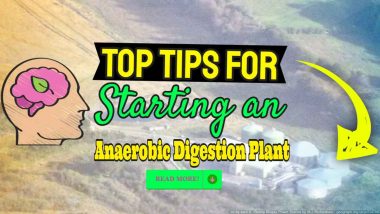The following is a list of “Food Waste Depackaging and Separation Equipment Suppliers”.
The list is based upon our online search for, as far as possible, a complete list of global manufacturers/ suppliers of depackaging and separation machinery designed to treat mixed biowaste waste streams for the purpose of reuse and recycling in the anaerobic digestion and waste management industries.
Where sidestreams are output, the purpose of this equipment is to enable users to comply with the waste hierarchy. Therefore, output streams need to be as clean as possible.
The main outputs of this equipment are an organic pulp or “soup” suitable for use in the anaerobic digestion process, and a reject stream of packaging materials, mostly comprising plastics.
Food Waste Depackaging and Separation Equipment Supplier List
| Depackaging Company | Country (HQ) | Product Name | Website |
|---|---|---|---|
| Anaergia | Ca | OREX™ | www.anaergia.com |
| Andritz | D | ADuro QZ | www.andritz.com |
| Atritor | UK | Turbo Separator | www.atritor.com |
| Doda | Fr | Doda Bio-separator | www.doda.com |
| Doppstadt | D | Screw Press DSP 205 | www.doppstadt.de |
| Drycake | Ca | Twister Separator | www.twisterseparator.com |
| Dupps/Mavitec | US | ~ | www.dupps.com |
| Eurec Technology | D | Disk Separator DSK | www.eurec.de (pdf file) |
| Flexidry | Fr | Depackager | www.green-creative.com |
| Hein. Lehmann Trenn- und Foerdertechnik | D | LIWELL® | www.heinlehmann.de |
| Herbold Meckesheim GmbH | D | ~ | www.herbold.com |
| Hybag | CH | Depackaging Press | www.hybag.ch |
| Komptech | AT | Terminator Stationary | www.komptech.com |
| Kufferath | D | ~ | www.andritz.com (Kufferath) |
| Lohse | D | Pulper | www.lohse-gmbh.de |
| Mavitec Green Energy | NL | Paddle Depacker | mavitecgreenenergy.com |
| Rothenburg | D | MJ206 | www.rothenburg-gmbh.de |
| Scott Equipment | US | Turbo separator | www.scottequipment.com |
| Sebright Products - Also Bright Technologies | US | Xtractor | www.sebrightproducts.com |
| Sepamatic | D | SEPAmatic | www.sepamatic.de |
| Siebtechnik GmbH | D | CONTURBEX | www.siebtechnik-tema.com |
| Spaleck | D | SPALECK TestCenter | www.spaleck.eu |
| Tiger Depack | ITA | HS series | www.tigerdepack.com |
| Veolia Watertech | US | Ecrusor™ | www.veoliawatertech.com |
| Vincent Corporation | US | Vincent dewatering screw press | www.vincentcorp.com |
| Wackerbauer | D | Food waste recycling equipment. | www.wackerbauer-maschinenbau.de |
| Smicon | NL | SMIMO depackaging machine | www.smicon.nl |
If you are a supplier of this equipment and not listed you are welcome to contact us and request inclusion.
Want an Easy to Use Version of this List?
It could easily save you several hours of research work.
Download the Spreadsheet Version now!
Listing New Models Offered by Food Waste Depackaging Suppliers
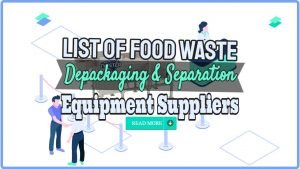 Make no mistake about it, there have been big improvements in recent years in food waste depackaging and separation equipment. The sector is transitioning away from first-generation equipment which comprised repurposed machines originally designed for MSW sorting, milling, pulping paer and cardand shredding, to purpose-built models which are the result of many years of innovative design.
Make no mistake about it, there have been big improvements in recent years in food waste depackaging and separation equipment. The sector is transitioning away from first-generation equipment which comprised repurposed machines originally designed for MSW sorting, milling, pulping paer and cardand shredding, to purpose-built models which are the result of many years of innovative design.
The characteristics we looked for in the listed equipment were:
- Acceptance of a wide range of biowastes from OFMSW (Organic Fraction of Municipal Solid Waste) to “Out of Specification” Products from the Food Processing industry
- Off the shelf tried and tested designs rather than one-off bespoke and purpose-designed prototype equipment
- Equipment in the functions are integrated, as opposed to suppliers offering separate units for each function such as bag opening and shredding followed by separation and sometimes multiple other units
- Suitability for the equipment to be used in conjunction with the anaerobic digestion process.
Features Offered by Food Waste Depackaging Companies
The features we looked for in the listed equipment were:
- Small footprint
- Low energy use
- Low capital cost
- High reliability, low downtime and long maintenance intervals
- Well documented case studies and satisfied client references
- Expert servicing offered from local depots
- Competitive pricing and long term spare parts availability.
We look for machines that avoid the use of particle size reduction (milling, macerating etc) for two reasons:
- they tend to be high in energy consumption
- smaller particle size correlates with a much higher level of microplastics creation.
We look for machines which combine multiple functions within a single unit for reduced system complexity, lower capital cost, a smaller footprint and best-in-class energy consumption.
Report Coming Soon on the Packaged Food Waste Separation and Organic Waste Pretreatment Equipment Market
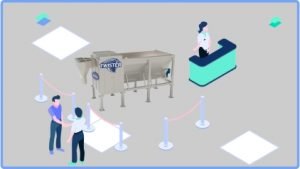 Considerations such as in the above bullet list will be reported on in our report which is due out soon, subject to the availability of objective factual and independent test data. The IPPTS report on food waste depackaging suppliers will be a downloadable pdf style ebook publication.
Considerations such as in the above bullet list will be reported on in our report which is due out soon, subject to the availability of objective factual and independent test data. The IPPTS report on food waste depackaging suppliers will be a downloadable pdf style ebook publication.
However, we hope that the list provided here will be a useful resource for our readers with or without our forthcoming; “Depackaging and Separation Equipment Suppliers Market Report”.
In future updates, we may need to consider the material usage sustainability of each of the listed companies. However, we have no benchmarking guidance at this time which would allow this to be assessed currently.
Depackaging: A sustainable business practice for dealing with food waste
The best depackaging equipment will separate and capture organic packaging materials from food waste, and also separate and recycle as much of the reject material (e. g. plastics) as possible.
Subject to regulatory requirements, operators of the new generation of this equipment will be able to benefit from green credentials. These come from reclaiming the organic content of food waste and incorporating it into the highest purity quality, natural compost and sustainable soil products.
In the post CPO26 era, all businesses must not only act in a sustainable way but also make plans and publish targets to decarbonise their whole organisations by 2050 or earlier. One way to do this for any organisation which produces food waste, and even some other previously unused organic materials, is to carry out their own in-house depackaging and separation.
An example of government involvement in this process is the US Food Waste Management Program. This scheme is addressing a major issue of our time that directly affects the human and ecological balance of the environment. That is by reducing methane emissions while also creating renewable energy to displace the use of fossil fuels.
There is no doubt that climate change can be reduced by reducing food waste, and recycling more. Where unavoidable waste still occurs it makes sense to channel it back into the circular economy. Efficiently depackaging food waste is a key component in this area.
According to the USDA, food waste represents 30 % of all American food manufactured. This can be due primarily to over-consumption in the homes and subsequently. In food production, there are evidently still many wastes generated in even the most sophisticated manufacturing facilities.
We have compiled our waste depackaging and separation equipment supplier list as a resource for all organic waste/ biowaste processors in the hope that we can assist in the selection of the most suitable equipment for their purchasing decisions.
Use of De-packaging Machines and Equipment at Biogas Plants
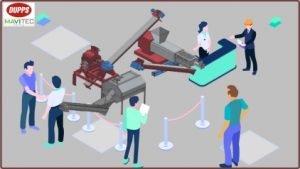 Packaged food waste originates from a variety of sources, including industrial and commercial streams such as restaurants, food producers, and supermarkets, as well as household streams where food waste is collected at the curb.
Packaged food waste originates from a variety of sources, including industrial and commercial streams such as restaurants, food producers, and supermarkets, as well as household streams where food waste is collected at the curb.
An efficient and reliable waste depackaging process is critical in order to move appropriate food waste material into the anaerobic digestion process. This includes the safe introduction of food waste into much-needed products such as:
- animal feeds
- argricultural fertilisers
- digestate based composts for retail sales to gardeners to replace the soon-to-be-banned use of peat.
Another important function of depackaging systems is to recycle waste that would otherwise go directly to landfills.
Combating the Negative Environmental Effects of Waste Food
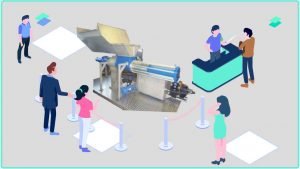 Waste food has been increasing for many years and the depackaging machine sector is growing to combat the negative environmental effects that entails. The cleaner separated packaging from the newest equipment can now be recycled more effectively than ever before, reducing waste and potentially adding new revenue streams for biogas plant operators.
Waste food has been increasing for many years and the depackaging machine sector is growing to combat the negative environmental effects that entails. The cleaner separated packaging from the newest equipment can now be recycled more effectively than ever before, reducing waste and potentially adding new revenue streams for biogas plant operators.
Clean separation of organic material (pulp or soup) from its packaging is essential in order to produce an output suitable for anything from feeding anaerobic digestion plants to animal feed and livestock bedding.
Many waste food products require packaging pre-processing to separate the organic content from the other materials. The waste depackaging process is critical to the removal of organic waste for other uses. High uptime of the separator is indispensable to the profitable operation of many biogas plants.
The list on this page is a list devoted to equipment designed to handle a wide range of incoming (mostly organic) waste. In addition to the suppliers we have listed there are also specialist and bespoke depackaging equipment manufacturers which we have not listed.
These systems are often used within the factories that produce the food, or in specialist companies supplied by one or more food processors under contract. Under these conditions, the machines used are tailored closely to handle the particular packaging type produced by the factory. The risk of unexpected, especially oversize items being present in the feed is far lower.
This equipment can be very efficient when processing a limited range of feeds, but would not necessarily be capable of reliable performance on food waste from multiple catering outlets, let alone an OFMSW.
That is not a criticism of the equipment. But it is the reason for not including specialised “waste-type” dedicated depackagers in our list. Examples of these machines, often called unpacking equipment, which is often deployed within the food processing plant, are:
- Metal (e. g. tin can) depackaging machines
- Pharmaceutical depackaging machines
- Plastic bottle depackaging machines.
3 Types of Specialist Unpacking Machines
Metal Tin Can Depackaging Machines
There are specialist metal (tin can) depackaging machines available, and some general depackagers will also successfully depackage tin cans. Always check your requirements with the supplier before ordering.
We recommend that visitors who are looking for commercial processing equipment to remove the food from tin cans make direct and detailed enquiries about this to the manufacturers.
Pharmaceutical Depackaging Machines
Waste commercial pharmaceuticals that have been fully packaged can go directly on to some general depackaging systems and be decontaminated using a decomposition machine.
The same applies to pharmaceuticals as we said previously; Those interested in commercial processing equipment for removing food from the pharma industry should contact the manufacturers directly and ask as many specific questions as necessary before ordering.
Plastic Bottle Depackaging Machines
The same comment applies as previously for this niche. Plastic Bottle Depackaging Machines can achieve high purity organic pulp which is consistently clean. It is simply a case of using the right purpose-designed waste packaging equipment When chosen well this equipment can be extremely effective at depackaging the food waste the incoming feedstock contains.


